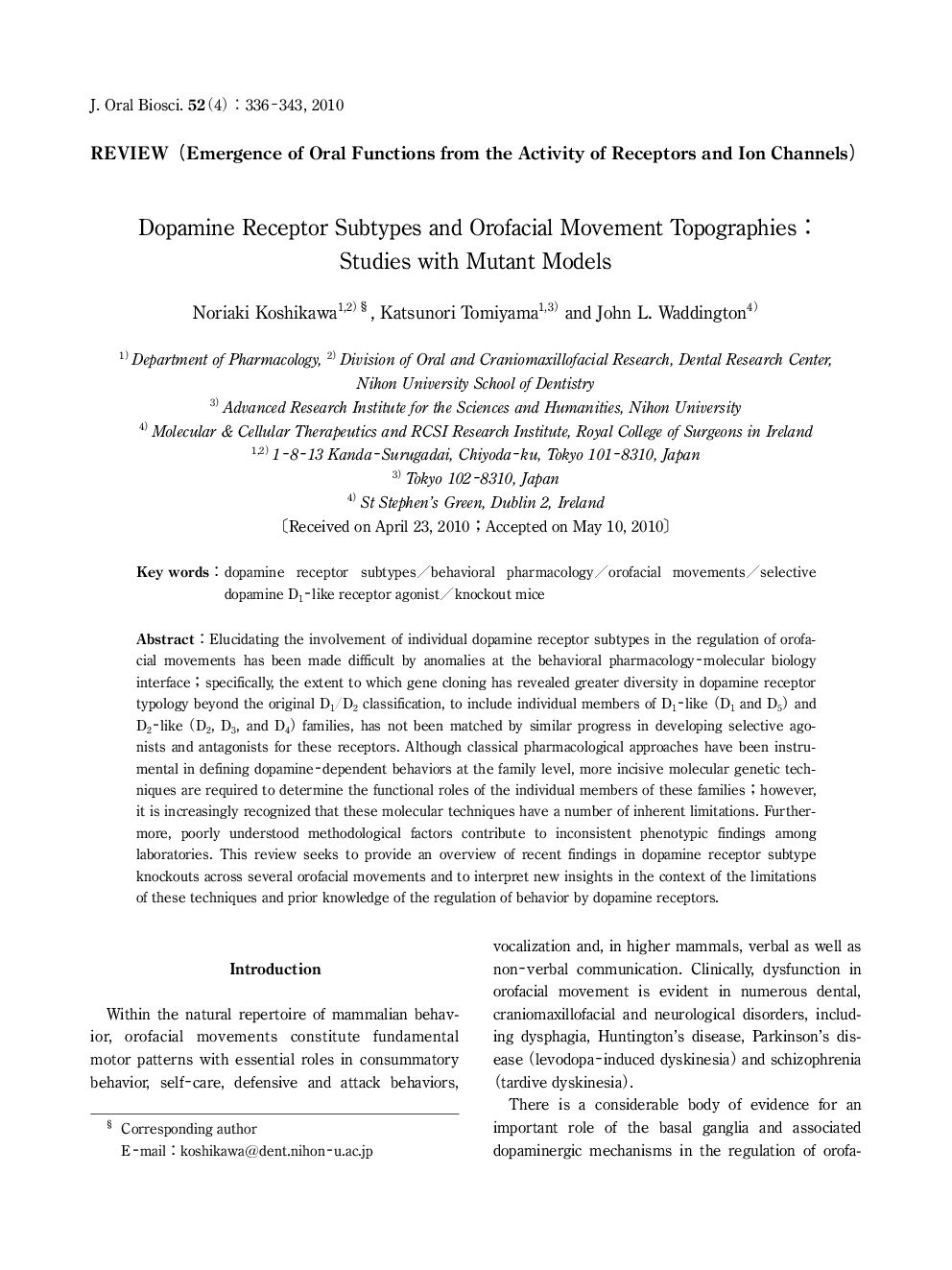| Article ID | Journal | Published Year | Pages | File Type |
|---|---|---|---|---|
| 2776813 | Journal of Oral Biosciences | 2010 | 8 Pages |
Elucidating the involvement of individual dopamine receptor subtypes in the regulation of orofacial movements has been made difficult by anomalies at the behavioral pharmacology-molecular biology interfaceGspecifically, the extent to which gene cloning has revealed greater diversity in dopamine receptor typology beyond the original D1/D2 classification, to include individual members of D1-like (D1 and D5) and D2-like (D2, D3, and D4) families, has not been matched by similar progress in developing selective agonists and antagonists for these receptors. Although classical pharmacological approaches have been instrumental in defining dopamine-dependent behaviors at the family level, more incisive molecular genetic techniques are required to determine the functional roles of the individual members of these families; however, it is increasingly recognized that these molecular techniques have a number of inherent limitations. Furthermore, poorly understood methodological factors contribute to inconsistent phenotypic findings among laboratories. This review seeks to provide an overview of recent findings in dopamine receptor subtype knockouts across several orofacial movements and to interpret new insights in the context of the limitations of these techniques and prior knowledge of the regulation of behavior by dopamine receptors.
